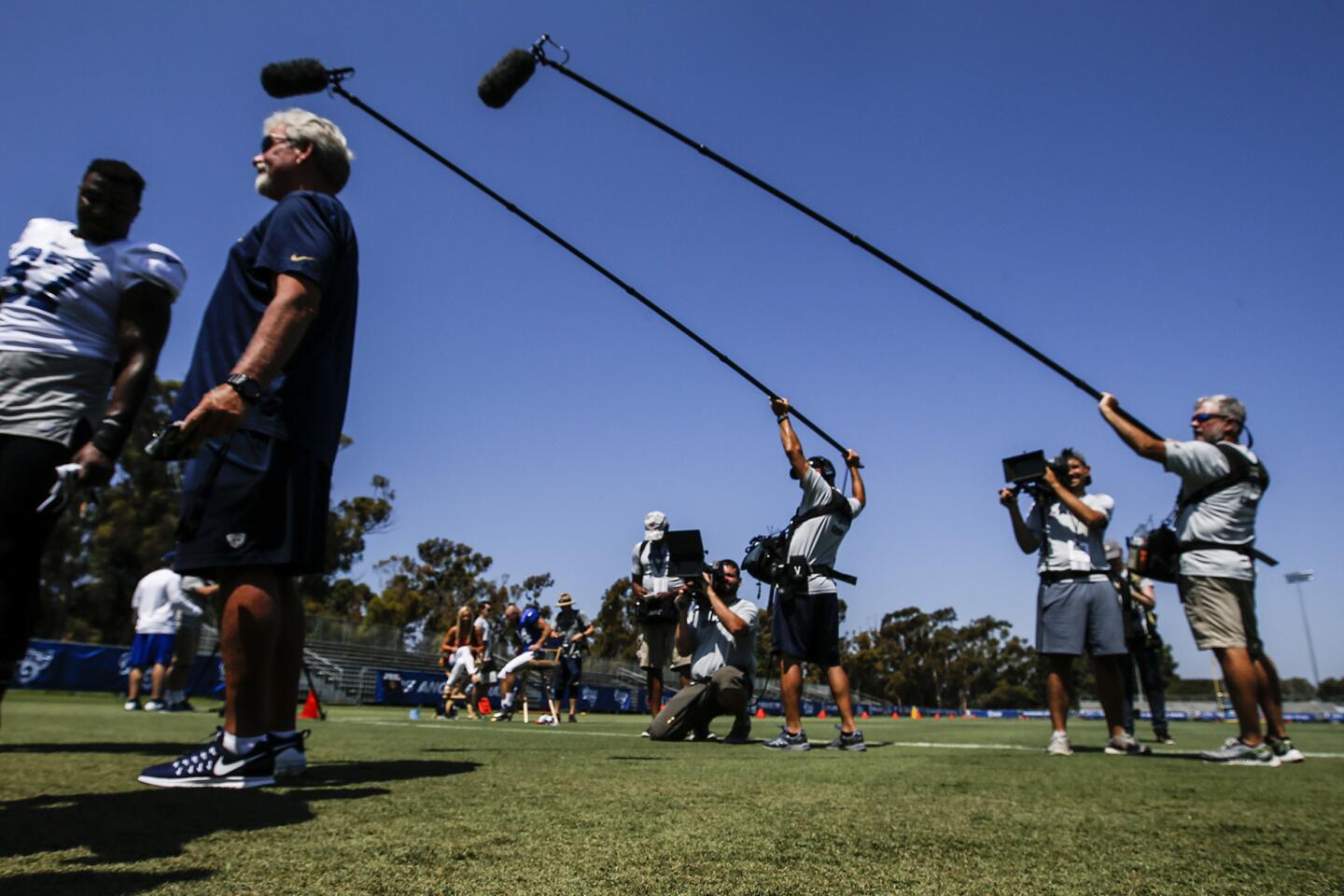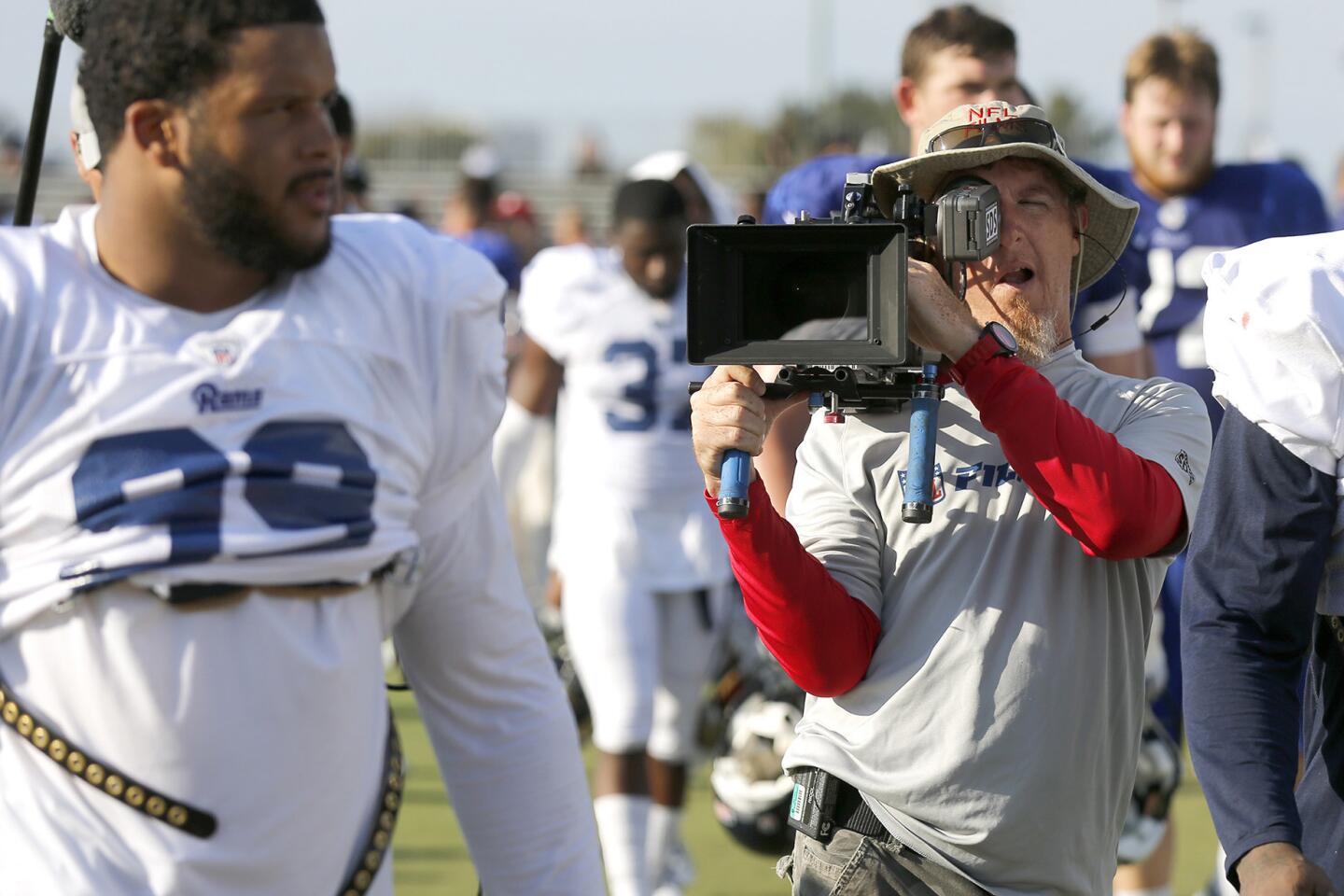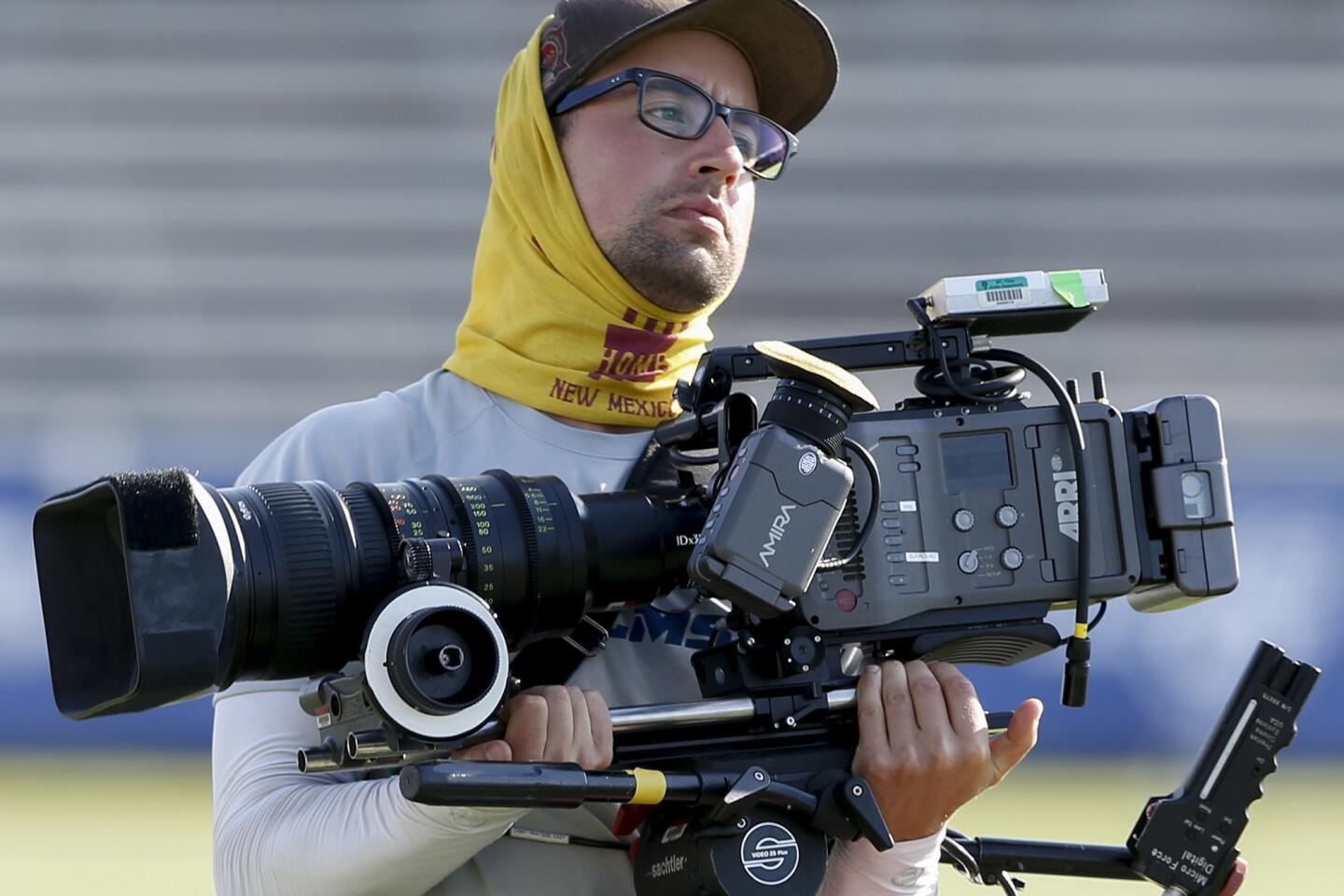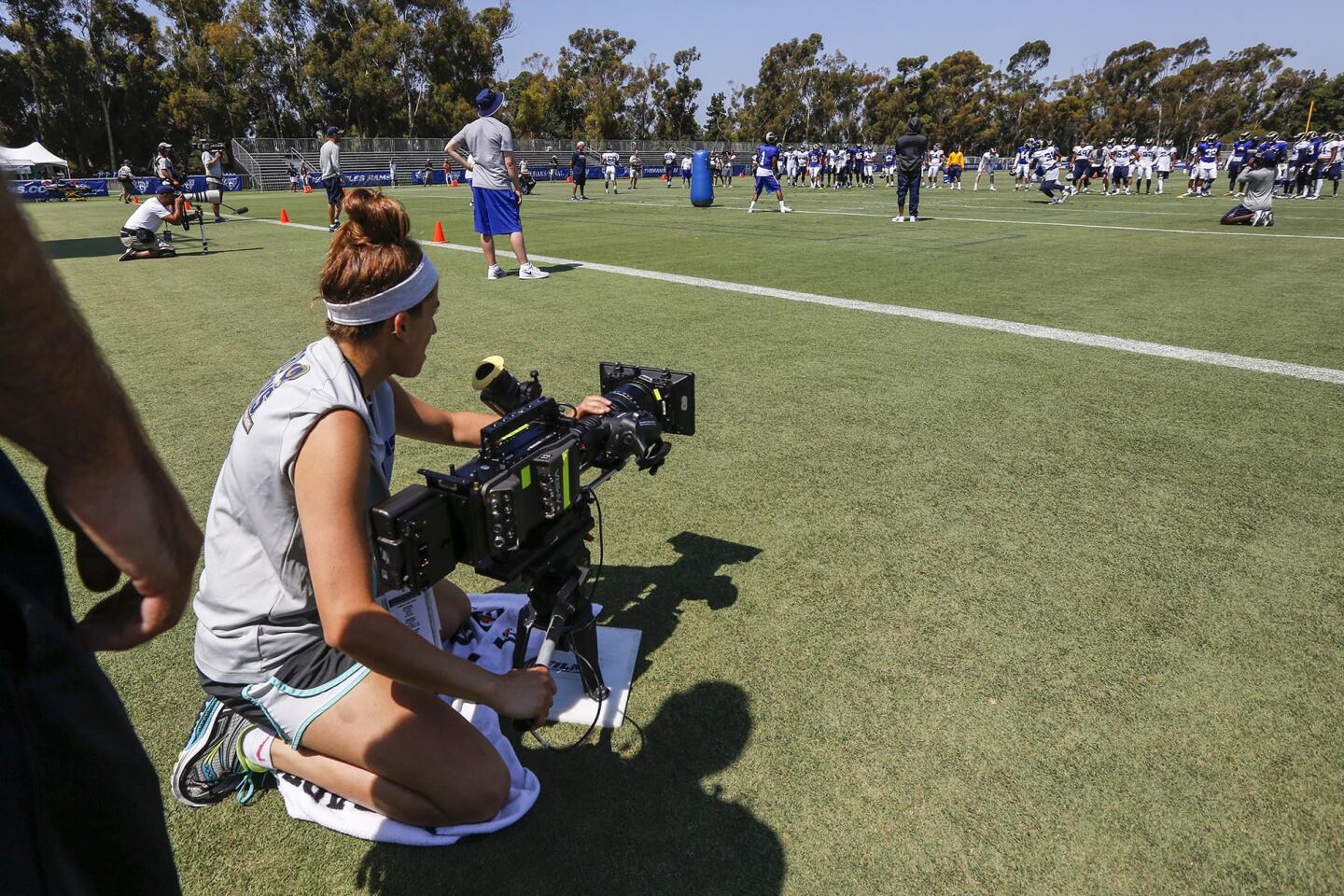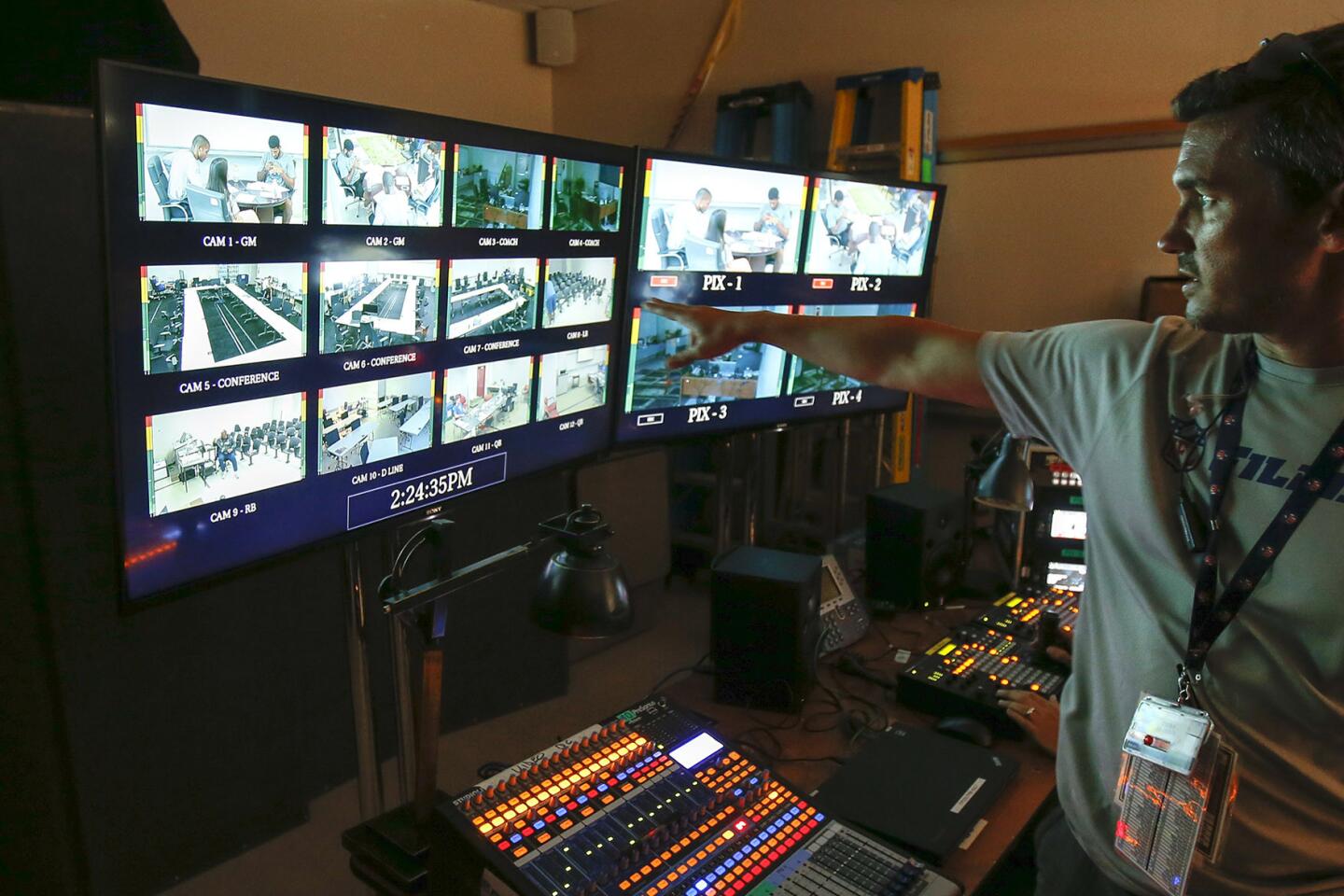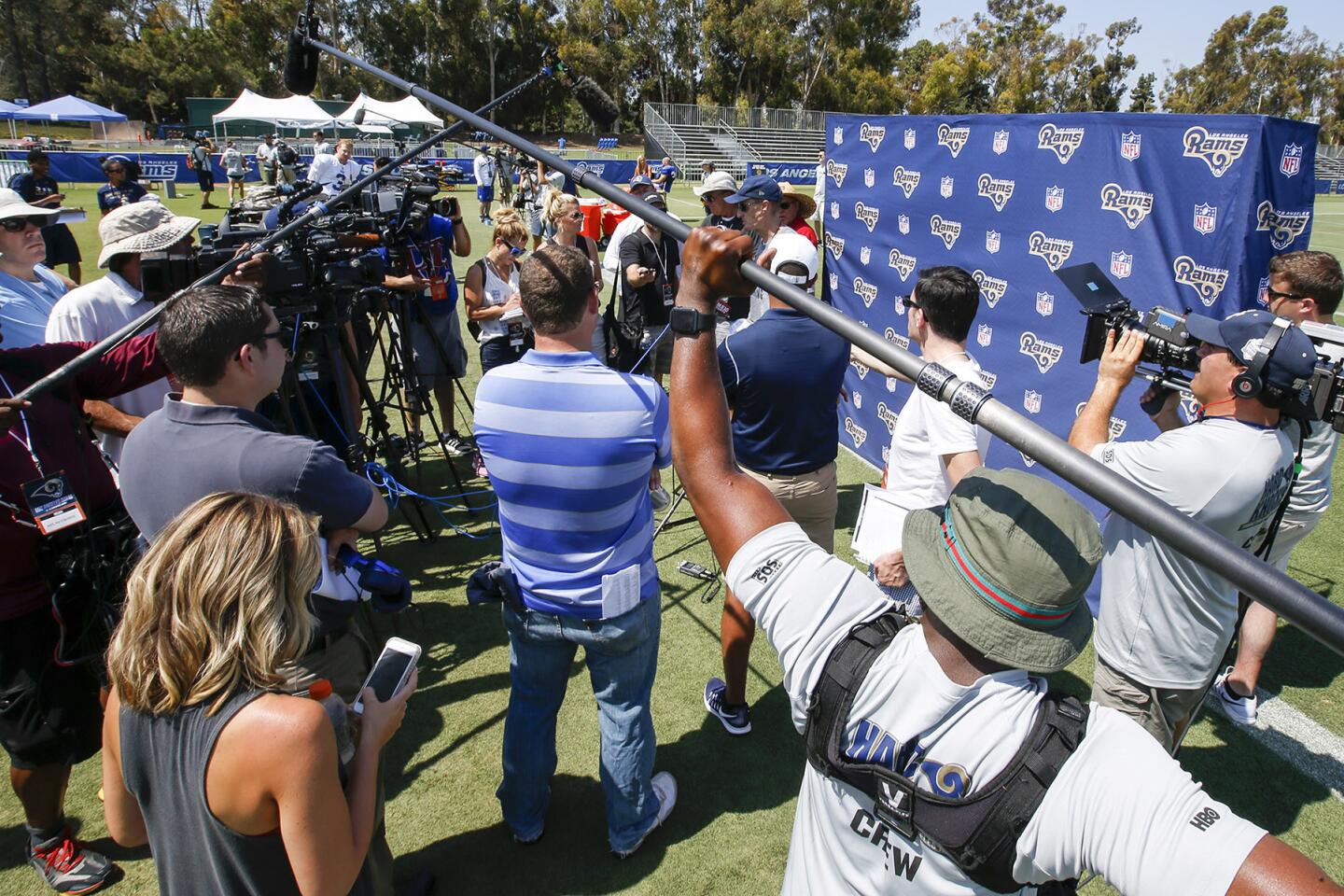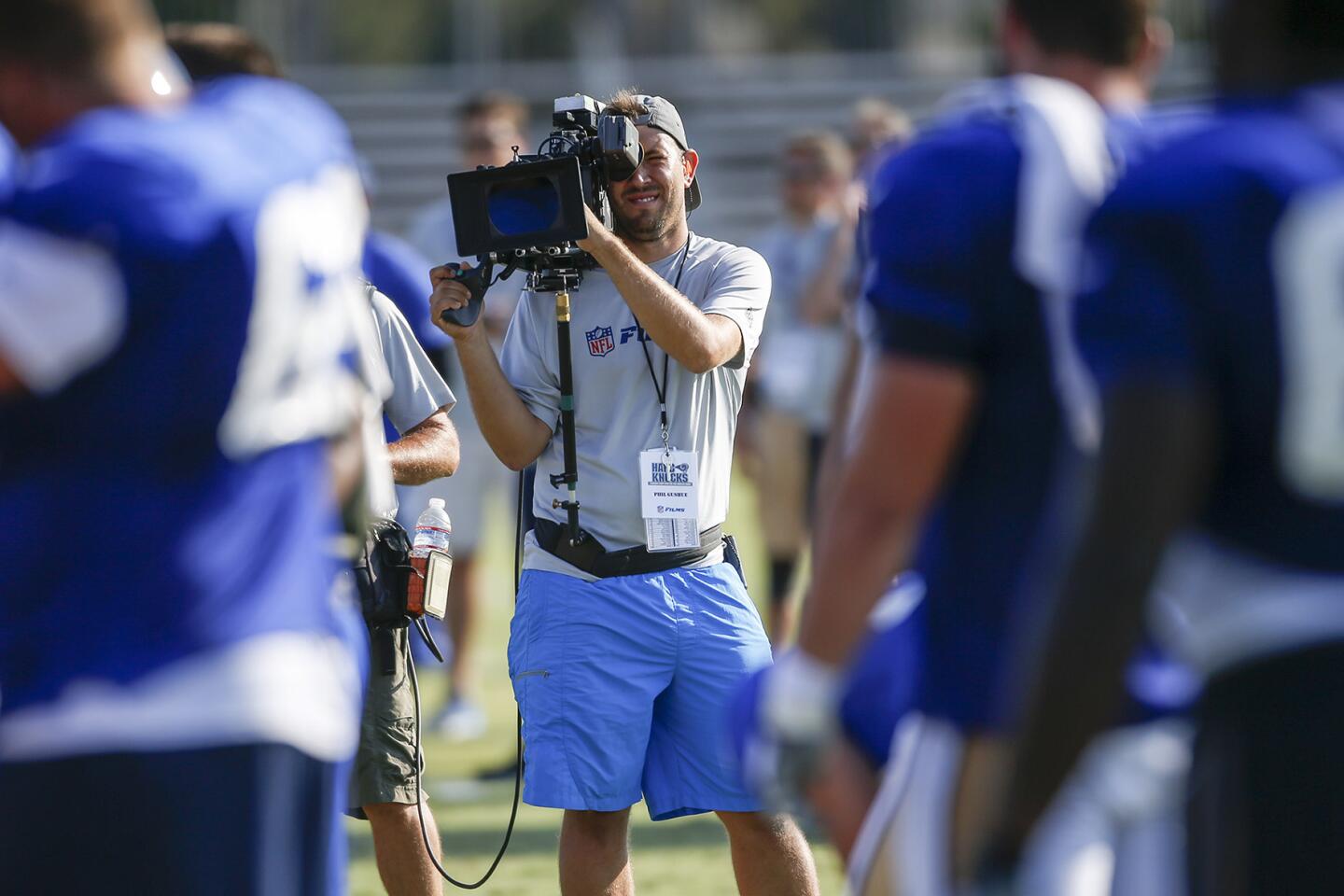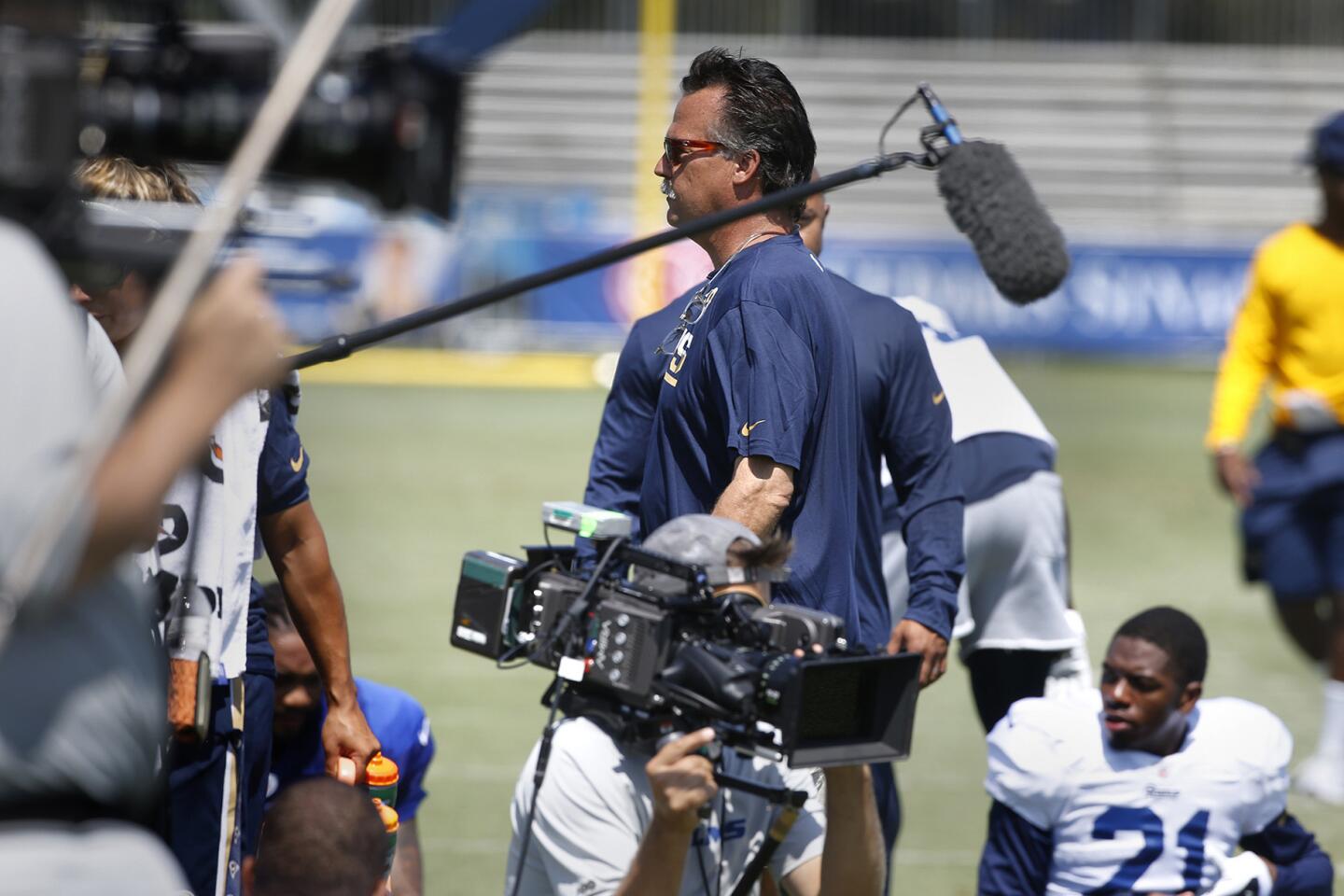‘Hard Knocks’ Rams are ready for their close-up
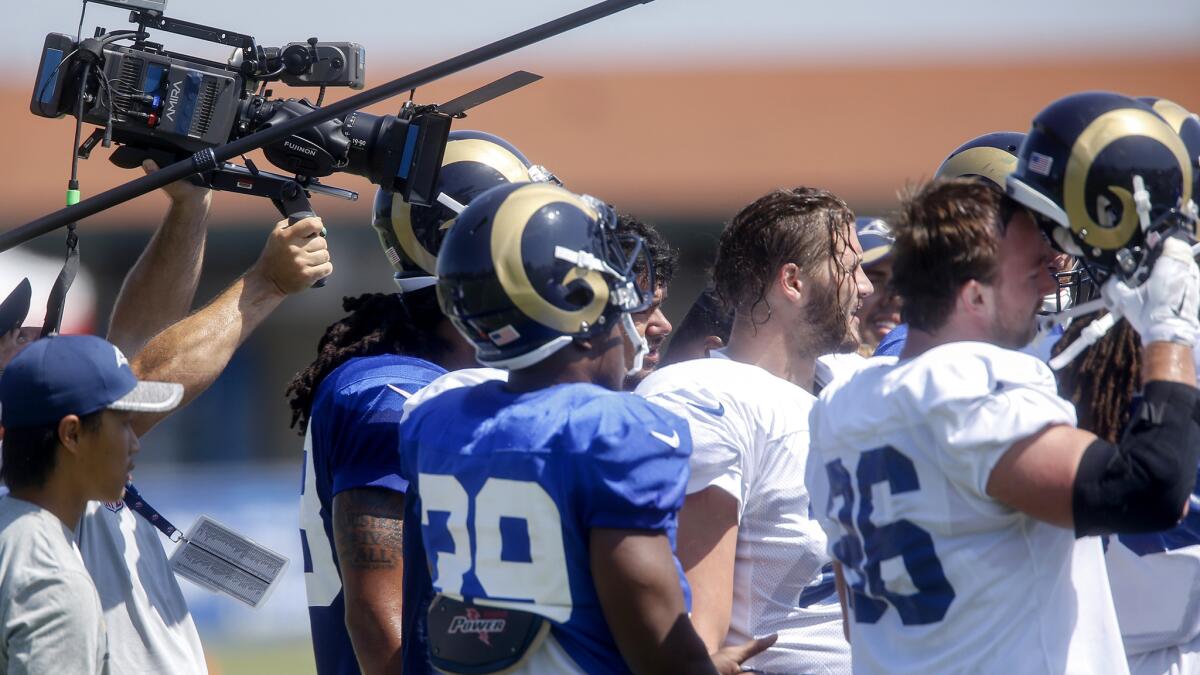
- Share via
The legendary Steve Sabol, late president and cornerstone of NFL Films, used to say that the frantic process of producing “Hard Knocks” – the HBO show that takes viewers into the inner sanctum of an NFL training camp – was like building an airplane in flight.
The six-week documentary series, which is focused this summer on the Rams and premieres Tuesday, is so up-to-date that the drama unfolds almost in real time. If a player were cut on a Monday, for instance, his story might be told in sharp relief the following night. Making that more impressive, the NFL Films people putting the show together comb through almost six hours of footage for every minute that actually airs. A crew of 30 is on site at training camp for the series, which launched in 2001 chronicling the Baltimore Ravens, and since has won 14 Sports Emmys.
If the all-access series is an airplane, it’s one that flies under the radar – the five camera crews pride themselves on being as low-profile as possible – and the cockpit is a converted classroom at UC Irvine, the campus where the Rams are holding camp.
That darkened classroom serves as the nerve center for the show’s 12 robotic cameras, discretely recording everything happening in the offices of Coach Jeff Fisher, General Manager Les Snead, the quarterbacks meeting room, the team meeting room, and elsewhere. A massive video wall is divided into a mosaic, showing each of the feeds, and a sound technician can toggle through them and eavesdrop with any of the multiple microphones throughout those rooms.

This season, “Hard Knocks,” the popular NFL Films/HBO series, is covering the return of the Rams to Los Angeles.
“The robotic equipment allows us to not distract the team,” said Ken Rodgers, who oversees the show as NFL Films coordinating producer. “That’s always our No. 2 goal in camp. No. 1 is to make a great show, and No. 2 is to not distract the team.”
On this particular afternoon, quarterback Jared Goff is sitting alone in a meeting room, leaning back in his chair and watching video, while a pair of free-agent receivers, Austin Hill and David Richards, sit at a small table in Snead’s office, apparently texting on their phones while waiting for their contracts to be brought in. Fisher’s office is dark.
Those cameras never stop rolling throughout the five-episode season, which after launching this week airs a new episode each subsequent Tuesday, culminating with the Sept. 6 finale. The footage is all digital now, but not too long ago, everything was shot on film. That was a costly endeavor, especially in light of how much of it wound up on the cutting-room floor. But Ed Sabol, founder of NFL Films and father of Steve, famously advised his crews to “let the film flow like water” to capture the essence of the sport.
The gray-clad “Hard Knocks” crews take pains to blend into the background. They don’t gather in large groups, but move in small clusters. Years of practice have taught them just where to stand to get the best angles, yet not be underfoot. Still, they aren’t invisible. While catching footballs from a Jugs machine after practice this week, linebacker Alec Ogletree noticed the shadow of a boom microphone creep over him.
“Guys try to watch what they say,” Ogletree said. “But as the days wear on, it will eventually all come out how guys are.”
Fisher spoke with his players on multiple occasions about being under the “Hard Knocks” microscope, telling them “it’s almost as if [the camera crews] disappear.”
“It’s been an exciting process, it’s been fun,” Fisher said. “The players are out here to help win games and to improve, not to make a movie. They’re not actors, they’re players.”
Dallas Cowboys owner Jerry Jones, whose team has been featured twice on “Hard Knocks,” said the key to the show working is the longstanding trust between clubs and NFL Films.
“If you trust them, then let them come in and shoot some really interesting stuff, then you can make it work,” said Jones, whose franchise was also the first to allow TV cameras in the draft room. “In my mind, if I were the Rams, I’d be all over this [attention] – every place you can get it, get it.”
The team gets the final editorial say when there’s the risk of “Hard Knocks” potentially revealing a strategic secret, although NFL Films is so savvy about that that it’s rarely an issue.
“Obviously, we’ll work with them when it comes to sensitive subjects,” said Matt Dissinger, the show’s director. “If there’s any sort of player who’s going through something that’s very personal, we’ll work with them. But the primary thing is screening for competitive-advantage elements. The guys that really know us at NFL Films, those are the ones that trust us. I would put Coach Fisher in that category.”
This season marks a couple of firsts for “Hard Knocks”: the first time the show has documented a franchise move – the crews captured the club’s relocation from St. Louis to Los Angeles – and the first time it has featured a No. 1 overall pick (Goff).
“Hard Knocks” changed the way NFL Films handles its football footage in general. It used to be that boxloads of just-shot videos were loaded onto planes and delivered twice a day to the company’s headquarters in Mt. Laurel, N.J. That changed in 2011, when “Hard Knocks” used a high-capacity Internet pipeline to feed the footage to a staff of 30 to 40 people on the other end. In the years that followed, the league installed those digital systems in every NFL stadium, allowing the footage to be easily transferred during and after games.
Even seasoned documentarians are amazed with how quickly the army of “Hard Knocks” crew members and editors are able to piece together episodes, making the story lines cohesive and the shows compelling.
“They get it to the point where it looks great and sounds great and feels like a feature-length documentary-level film, however their turnaround time is maybe 5% of what that would normally take,” said NFL player turned documentary maker Ed Cunningham, producer of “Undefeated,” which chronicles a high school football team and in 2012 won the Academy Award for best feature-length documentary.
“The speed at which they post-produce that show is mind-blowing.”
Clearly, this plane has reached a comfortable cruising altitude.
sam.farmer@latimes.com
Twitter: @LATimesfarmer
Go beyond the scoreboard
Get the latest on L.A.'s teams in the daily Sports Report newsletter.
You may occasionally receive promotional content from the Los Angeles Times.
